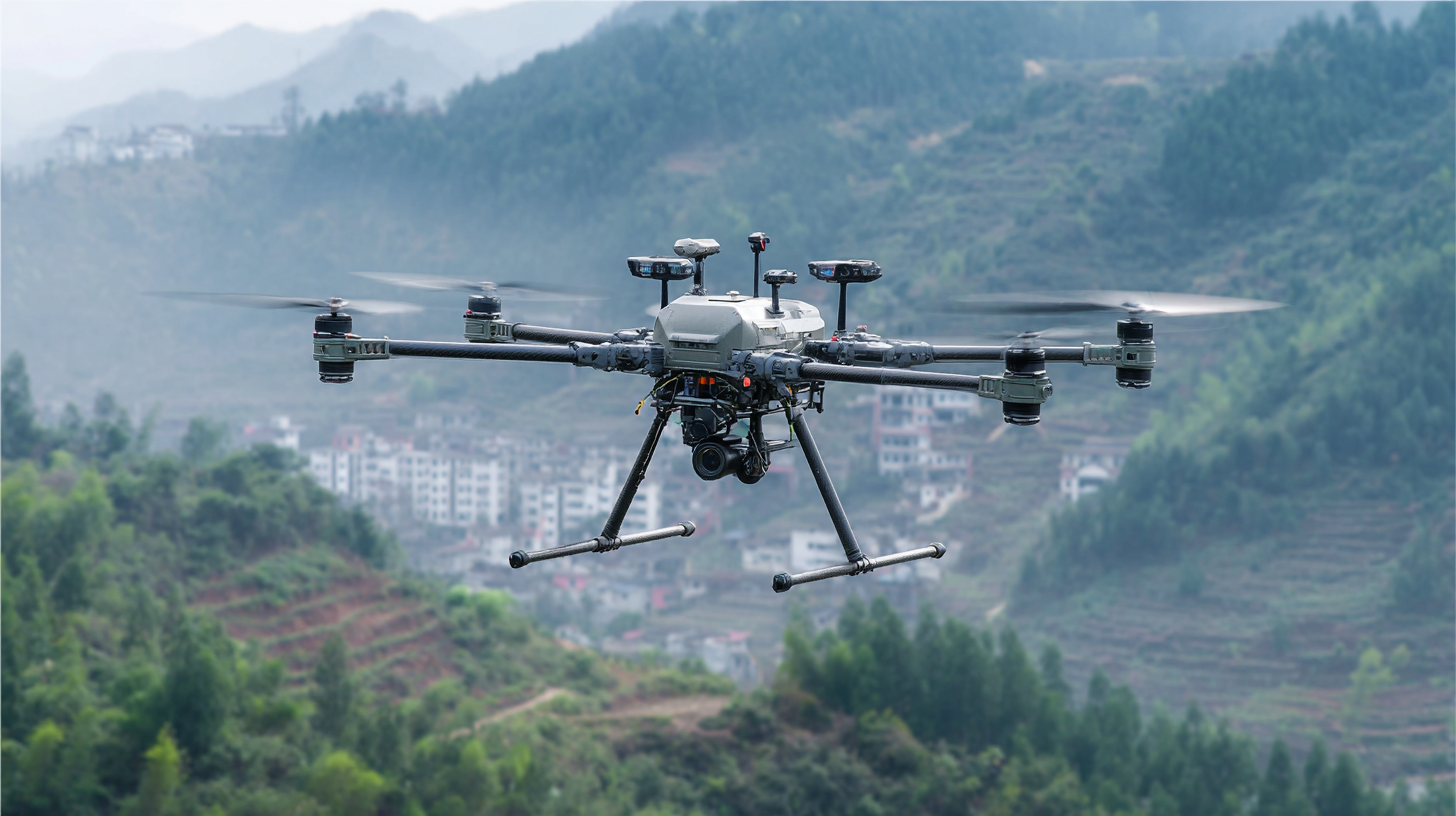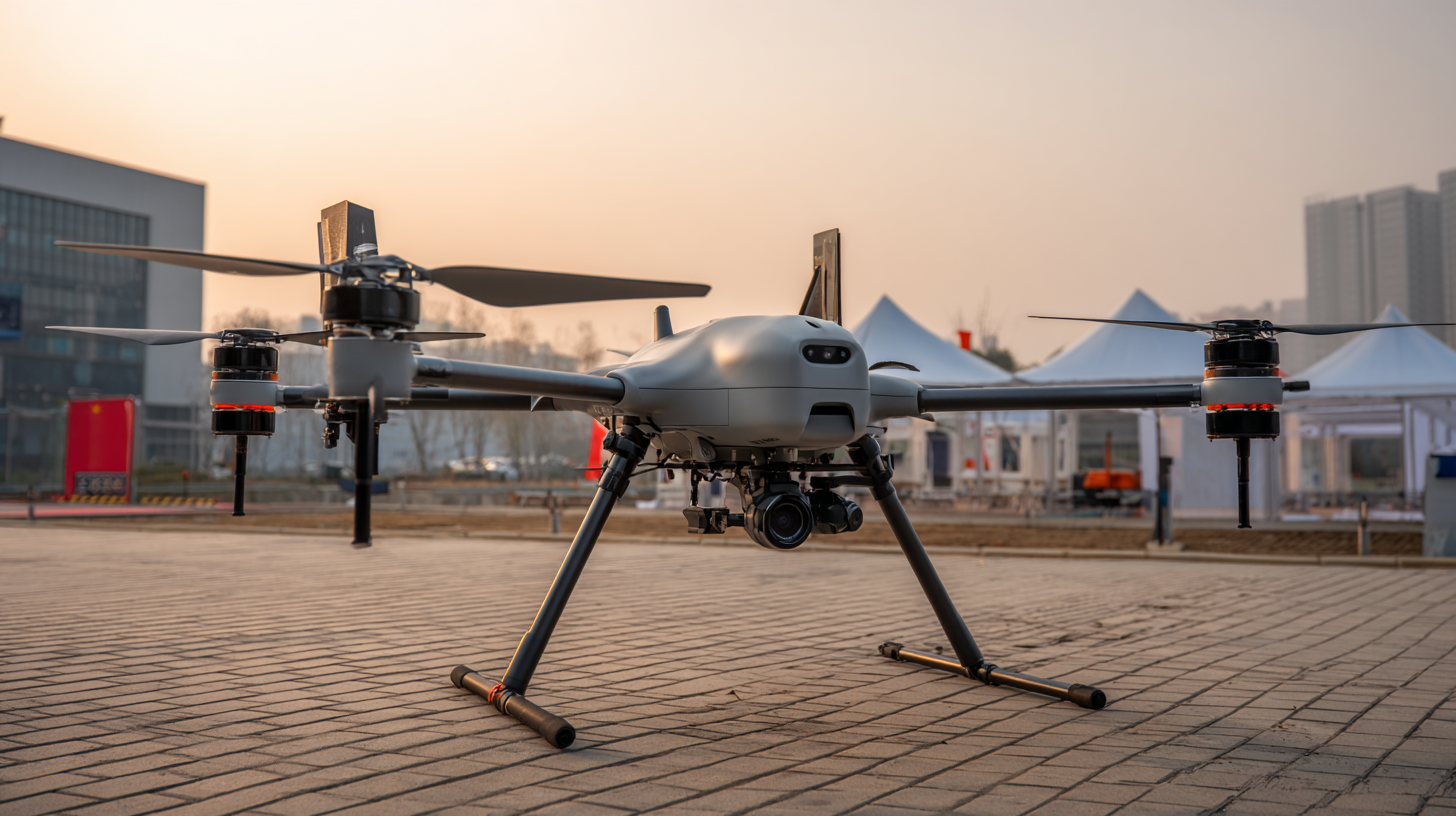Leave Your Message
 In recent years, the global procurement of UAVs (Unmanned Aerial Vehicles) has surged, driven by advancements in technology and the expanding applications of these aerial systems across various industries. According to a report by MarketsandMarkets, the UAV market is expected to grow from $22.5 billion in 2020 to $49.9 billion by 2025, reflecting a compound annual growth rate (CAGR) of 17.5%. This remarkable growth is not only a testament to the increasing reliance on UAVs for purposes such as surveillance, agriculture, and logistics, but also showcases the pivotal role of manufacturing nations like China. As the world's largest producer of drones, China has made significant strides in meeting world-class standards through rigorous export-import certification processes, allowing for seamless integration into global supply chains. This blog will explore the intricate landscape of UAV procurement, examining the intersection of industry standards, manufacturing excellence, and the vital certifications that enable this booming market to thrive.
In recent years, the global procurement of UAVs (Unmanned Aerial Vehicles) has surged, driven by advancements in technology and the expanding applications of these aerial systems across various industries. According to a report by MarketsandMarkets, the UAV market is expected to grow from $22.5 billion in 2020 to $49.9 billion by 2025, reflecting a compound annual growth rate (CAGR) of 17.5%. This remarkable growth is not only a testament to the increasing reliance on UAVs for purposes such as surveillance, agriculture, and logistics, but also showcases the pivotal role of manufacturing nations like China. As the world's largest producer of drones, China has made significant strides in meeting world-class standards through rigorous export-import certification processes, allowing for seamless integration into global supply chains. This blog will explore the intricate landscape of UAV procurement, examining the intersection of industry standards, manufacturing excellence, and the vital certifications that enable this booming market to thrive.
China has emerged as a dominant player in the global UAV manufacturing industry, showcasing remarkable advancements in technology and production capabilities. With a unique blend of cost efficiency and rapid innovation, Chinese manufacturers have positioned themselves at the forefront of the market, catering to both civilian and military applications. The country’s robust supply chain, combined with significant investment in research and development, has paved the way for the production of drones that not only meet but often exceed international standards.
The rise of China in this sector reflects a strategic shift in global procurement practices, as nations increasingly recognize the value of high-quality and competitively priced UAVs. Chinese companies have gained numerous contracts worldwide, enhancing their reputation while also fostering collaboration in drone technology. As regulatory frameworks evolve and demand for unmanned aerial vehicles expands, China's commitment to excellence and innovation solidifies its status as a global leader, redefining the landscape of UAV manufacturing for years to come.
| Country | UAV Type | Max Flight Time (hours) | Payload Capacity (kg) | Operating Altitude (m) |
|---|---|---|---|---|
| China | Fixed-Wing | 20 | 200 | 5000 |
| USA | Quadcopter | 10 | 5 | 4000 |
| India | Hybrid VTOL | 15 | 40 | 3000 |
| Australia | Multi-Rotor | 8 | 10 | 2000 |
| Germany | Fixed-Wing | 18 | 100 | 6000 |
In recent years, China's unmanned aerial vehicles (UAVs) have gained notable recognition on the global stage, not only for their innovative designs but also for their impressive performance metrics. A comprehensive evaluation of these UAVs reveals that they consistently meet and often exceed world-class standards in various categories, including endurance, payload capacity, and advanced avionics. The combination of cutting-edge technology and rigorous testing has established a new benchmark for UAV manufacturing, making Chinese products highly competitive worldwide.
The meticulous attention to quality assurance during the manufacturing process is a key factor contributing to the success of Chinese UAVs. From the selection of materials to the integration of sophisticated flight control systems, each step is designed to optimize performance and reliability. Moreover, with an ever-evolving regulatory landscape, Chinese manufacturers are adapting to international compliance requirements, ensuring that their UAVs not only meet domestic quality norms but also align with global expectations. As the demand for versatile UAV solutions continues to rise, the emphasis on quality and performance will undoubtedly propel Chinese UAVs to the forefront of the global market.
This bar chart represents various performance metrics for Chinese UAVs that meet world-class standards, showcasing their capabilities in payload capacity, flight time, speed, range, and camera quality.
 Innovation in UAV design has propelled China to the forefront of the global drone industry. Chinese manufacturers are not only enhancing traditional UAV capabilities but are also pioneering advanced technologies that meet rigorous international standards. According to a recent report by the Drone Industry Association, the global UAV market is projected to reach $41.3 billion by 2026, with a significant share attributed to innovations stemming from Chinese firms. These advancements encompass enhanced aerodynamics, improved battery life, and sophisticated AI-driven navigation systems, setting new benchmarks in the competitive landscape.
Innovation in UAV design has propelled China to the forefront of the global drone industry. Chinese manufacturers are not only enhancing traditional UAV capabilities but are also pioneering advanced technologies that meet rigorous international standards. According to a recent report by the Drone Industry Association, the global UAV market is projected to reach $41.3 billion by 2026, with a significant share attributed to innovations stemming from Chinese firms. These advancements encompass enhanced aerodynamics, improved battery life, and sophisticated AI-driven navigation systems, setting new benchmarks in the competitive landscape.
Companies like DJI and EHang exemplify this innovation trend, leading the charge in integrating cutting-edge technology with practical functionality. DJI’s Mavic Air 2, for example, features a 1/2-inch sensor capable of capturing 48 MP stills and 4K video, catering to both commercial and recreational users. Furthermore, EHang's autonomous aerial vehicles are reshaping urban transportation concepts, with ongoing pilot programs in cities like Guangzhou. The relentless pursuit of innovation by Chinese manufacturers indicates their vital role in shaping the future of UAV technology, marking a significant impact on both domestic and international markets. As these firms push the envelope, they are establishing a new blueprint for UAV design and functionality that is setting a pace for the industry worldwide.
China's unmanned aerial vehicles (UAVs) are rapidly gaining traction in international markets, thanks to a combination of innovative technology and competitive pricing. According to a report by the Teal Group, the global UAV market is expected to reach $48 billion by 2029, with a significant portion attributed to Chinese manufacturers. Companies like DJI and Xi'an ADS provide a wide range of UAVs that not only meet stringent global safety and performance standards but also offer unique features tailored to various sectors, from agriculture to surveillance.
The global impact of Chinese UAVs is evident in their successful entry into diverse markets. A recent study by MarketsandMarkets suggests that Asia-Pacific is the fastest-growing region for UAV applications, driven largely by China's robust production capabilities. The nation's emphasis on research and development has propelled its drones into high-demand applications such as disaster management and infrastructure monitoring, underscoring their significance on the world stage. China's commitment to improving the technology and functionality of its UAVs ensures that they are not just cost-effective options, but also reliable solutions for international clients seeking cutting-edge aerial technology.

China's UAV export industry is currently facing a unique blend of challenges and opportunities. As global demand for advanced UAV technology accelerates, Chinese manufacturers must navigate complex regulatory landscapes, international trade tensions, and rising competition from other nations. Nevertheless, with a commitment to innovation and the ability to produce high-quality products at competitive prices, China stands poised to carve out a significant share of the international UAV market.
**Tip 1:** Collaborate with local partners to better understand regional regulations and gain access to established distribution networks. This can ease entry into new markets and foster strategic alliances that enhance credibility.
The opportunities for growth are immense. As industries like agriculture, logistics, and surveillance increasingly adopt UAV technology, Chinese manufacturers can leverage their expertise to develop tailored solutions that meet the specific needs of various sectors. Building a strong brand presence internationally will also be critical in overcoming preconceived notions about quality and reliability.
**Tip 2:** Focus on R&D to enhance product offerings. Investing in cutting-edge technology and sustainable practices can differentiate Chinese UAVs and create favorable perceptions in the global market.
In summary, while challenges exist, the potential for expansion and leadership in the UAV sector is vast if Chinese firms adopt a strategic approach to innovation and collaboration.
